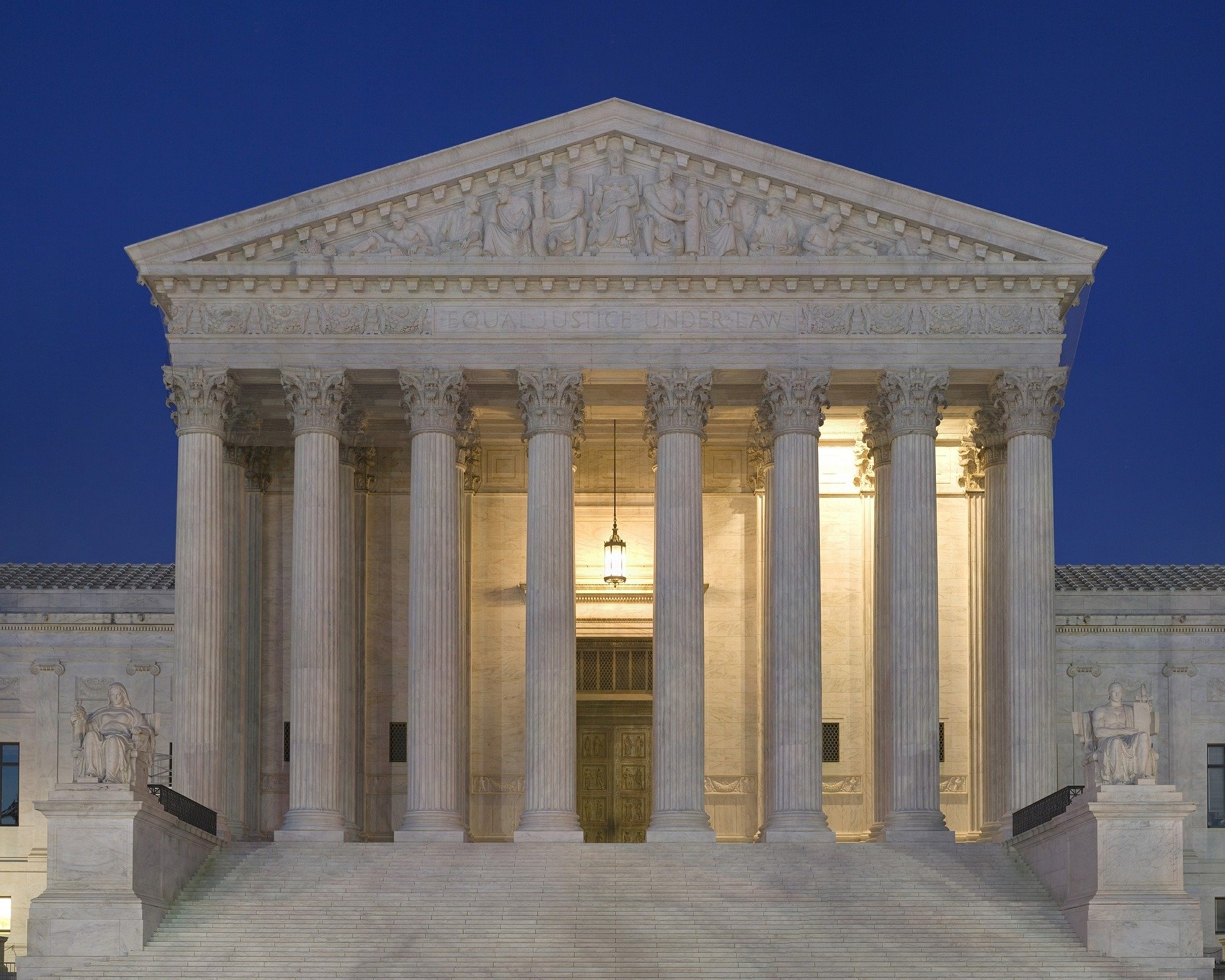

RECOMMENDED READING
Now that the Supreme Court is in the news, with President Donald Trump’s nomination of Judge Amy Coney Barrett to succeed the late Ruth Bader Ginsburg, it is worth reflecting on what kind of constitutional system is best for a national industrial strategy of the kind favored by a growing number of Americans on the left, right and center, in the aftermath of the catastrophic failure of a half century of neoliberal deregulation and globalization.
Industrial policy has taken different forms in different countries and different eras. But successful policies of national industrial development and strategic trade tend to rely heavily on a few institutions, which exist in countries which otherwise are quite dissimilar. For example, there needs to be some kind of formal or informal “state capitalism,” sometimes but not always in the form of specialized policy banks which steer capital toward infrastructure projects or industries, particularly domestic manufacturing, which are important to the nation but do not attract enough private investment. Export-import banks or Eximbanks are also an important tool of national developmentalism, as industrial nations compete in the realm of “vendor finance” to help lend foreign buyers the money to buy the products of their own high-value-added export industries.
And in most countries with successful industrial policies there is one or another system of tripartite labor-employer-government policymaking with regard to wages, benefits and working conditions. A country whose employers are trying to drive down wages constantly while stripping workers of benefits, while the country’s trade unions see businesses as enemies, can hardly succeed as a well-organized nation-state competing in the world economy with other nation-states.
For a national industrial policy to work, it is not enough that there be institutions like the ones I have mentioned and others. The policymaking institutions must be relatively stable and able to carry out consistent strategies over many election cycles. Occasional course corrections will be necessary. But a successful national industrial policy should enjoy a broad bipartisan consensus, so that changes in party control of the government do not cause radically different policies.
In the context of America’s separation-of-powers constitution, this means that it is necessary to insulate major industrial policy institutions from capture by partisans of particular presidents, while defending the same institutions from destruction by economic libertarians on the Supreme Court and the federal judiciary.
The need to avoid excessive subordination of industrial policy institutions to the White House is obvious. For one thing, the mission of agencies like Eximbanks and policy banks and labor relations boards would be easily corrupted, if they are run by short-term presidential appointees whose first loyalty is to the president who appointed them and whose second loyalty is to the firms or banks which will employ them after they leave public office after a few years.
Another problem is short-termism. Any national industry policy will be wrecked if policymakers are pressured by presidents who seek re-election to show results in election years. Some long-term plans must mature over several presidential terms or even several presidencies.
Fortunately, in the U.S. we have two major options for structuring administrative agencies, including those that handle aspects of industrial policy and trade finance. In addition to the classic cabinet departments directly responsible to the White House, there are also independent agencies created by Congress. Some of these are structured as multi-member commissions with staggered terms which maximize the likelihood that members will be appointed by different presidents and represent different parties. While the president can appoint members, Congress can impose limits on presidential removal power. This is a feature, not a bug, if you think that continuity and consensus are necessary for successful industrial policy.
While excessive presidential control is one threat to the successful functioning of national developmentalist agencies, another is the hostility of libertarians in the courts or Congress. It was, after all, the Supreme Court in 1935 that struck down one of the original experiments in U.S. federal labor-employer-government tripartism, the National Industrial Recovery Act. Recently economic libertarians on the right including Heritage Action, Republican Senator Mike Lee of Utah, and Republican Representative Justin Amash of Michigan have continued the decades-old right-libertarian crusade to abolish the Eximbank and leave the U.S. economically disarmed in the face of competition with the export credit agencies of rival industrial countries.
Advocates of U.S. industrial policy must be particularly concerned by the influence of the Federalist Society on the Republican majority on the Supreme Court. The Federalist Society pretends to be a “conservative” judicial organization but in fact is permeated by radical free-market libertarian ideology. (I belonged briefly to the Federalist Society in law school, but resigned when it became clear it was run by free-market libertarian radicals who paid only lip service to national security and social concerns).
Many right-libertarians who influence the thinking of Federalist Society judges favor the unitary executive theory. The unitary executive theory holds that all restraints on presidential removal power, and by implication all independent agencies and commissions, are unconstitutional. According to this radical doctrine, the Supreme Court should rule that independent regulatory agencies like the Federal Trade Commission and the Federal Communications Commission (FCC) are unconstitutional and must be eliminated on the grounds that they usurp the president’s “inherent” executive power. Under this extremist theory, not only can there be no independent agencies, there can also be no civil service. Each incoming president could fire millions of government employees and replace them with political appointees, in a modern version of the “spoils system” of the Jacksonian era. The reign of President Andrew Jackson, which saw the destruction of the Second Bank of the United States and the transfer of its deposits to “pet banks” controlled by the Jackson administration, and the repudiation of any federal infrastructure system, was not a good time for U.S. industrial policy.
There is no basis in the constitution for the unitary executive theory, as we can see from a glance at Article II, which describes the president’s powers:
Article II, Section 2, Clause 2:
He shall have Power, by and with the Advice and Consent of the Senate, to make Treaties, provided two thirds of the Senators present concur; and he shall nominate, and by and with the Advice and Consent of the Senate, shall appoint Ambassadors, other public Ministers and Consuls, Judges of the supreme Court, and all other Officers of the United States, whose Appointments are not herein otherwise provided for, and which shall be established by Law: but the Congress may by Law vest the Appointment of such inferior Officers, as they think proper, in the President alone, in the Courts of Law, or in the Heads of Departments.
In other words, Congress has discretion in deciding who appoints (and implicitly who removes) “inferior officers,” and can structure federal agencies as it sees fit. This constitutional provision would be pointless if the president has a general removal power, because you obey the person who can fire you in the future, not the person who appointed you in the past.
Indeed, the drafters of the constitution took the independence of many federal officials from the president so much for granted that they felt obligated to explicitly grant the president the constitutional power to…ask the heads of departments what they are doing!
Article II, Section 2, Clause 1:
The President shall be Commander in Chief of the Army and Navy of the United States, and of the Militia of the several States, when called into the actual Service of the United States; he may require the Opinion, in writing, of the principal Officer in each of the executive Departments, upon any Subject relating to the Duties of their respective Offices, and he shall have Power to grant Reprieves and Pardons for Offences against the United States, except in Cases of Impeachment.
If the president possessed an inherent, illimitable, plenary “executive power” it would hardly have been necessary to make it illegal for federal administrators to respond to a presidential request for information with “None of your business!”
The unitary executive theory is sometimes defended on the basis of democratic legitimacy. The American people, we are supposed to believe, holds government bureaucrats responsible for specific actions by electing presidents every four years to supervise them. If you believe that any actual voter in the real world will switch from one presidential candidate to the other solely because of distress over a specific Eximbank lending decision, and that voters choose presidents on the basis of their competence in supervising federal bureaucrats, you might be interested to learn that the Brooklyn Bridge is up for sale.
In addition to the unitary executive theory that turns the president into a freely-elected but otherwise largely-uncontrolled four-year dictator, many of the radical intellectuals of the libertarian right who influence the Federalist Society call for the courts to strike down broad delegations of authority by Congress to the president or to independent agencies. A narrow version of the “nondelegation doctrine” would make it impossible for Congress to establish or maintain the kinds of agencies necessary for a successful U.S. industrial policy—both existing agencies like the Eximbank and possible new ones, like new industrial lending institutions or a new system of government-brokered labor-management relations to replace the moribund labor law system of today. Remember, in 1935 the Court used the nondelegation doctrine as an excuse to strike down the National Industrial Recovery Act, destroying the evolving system of sectoral bargaining and standards that were being constructed under it, to the lasting detriment of American labor and business alike.
Ever since the eighteenth century, Congress has delegated certain decision-making and rule-making authority to various administrative bodies because the alternative would be an absurd level of Congressional micromanagement through impossibly detailed legislation. The “administrative state” needs to be jointly supervised by Congress, the president and the courts; it does not need to be dismantled to create a utopian free market paradise in which the government is small enough to be drowned in a bathtub.
In the nineteenth century, what is today called “libertarianism” or “classical liberalism” was often called “philosophical radicalism.” And libertarianism is a radical philosophy indeed. Economic libertarians don’t care if they cripple the nation-state because they view the nation-state, in any form greater than a minimal “nightwatchman state” that enforces contracts, as a threat to individual liberty. If other countries, using industrial policy, corner the global markets in automobiles, aerospace, computers, consumer electronics, and robotics, and turn a deindustrialized U.S. into a low-wage tourist trap with a side business in exports of pork and corn and scrap metal, well, that is a much better outcome than the nightmare scenario of libertarians—a nightmare scenario in which the American government is allowed to help American industries and American workers.
In recent years, the Democratic minority on the Supreme Court has been somewhat better than the Republicans among their colleagues in defending the existence of independent agencies and rejecting overly-broad claims of inherent presidential executive power. It would be tragic if, now that the most thoughtful members of the Republican party are reconsidering their party’s recent hostility toward industrial policy and tripartism in labor relations, life-tenured Republican Supreme Court justices were to attack the necessary instruments of national industrial policy for decades to come, crippling American power and prosperity.
Recommended Reading
Industrial Policy May Have Finally Arrived: But For What?
Ever since the concept of a national industrial policy was proposed in the 1970s, it has received scorn from most neo-classical economists, with those advocating it treated as the economic equivalent of chiropractors.
Industrial Security Policy: New Missions for DoD, SBA and CFIUS
Thanks to the near-criminal negligence of neoliberal globalist policymakers in both the Democratic and Republican parties, America’s national industrial base, the foundation of its global power, has eroded to the point of collapse.
Many Countries Are Seeing a Revival of Industrial Policy
A special report on industrial policy and the relationship between business and the state cites American Compass executive director Oren Cass as one of the leading voices calling for a rethinking of industrial policy’s potential in the modern market.












